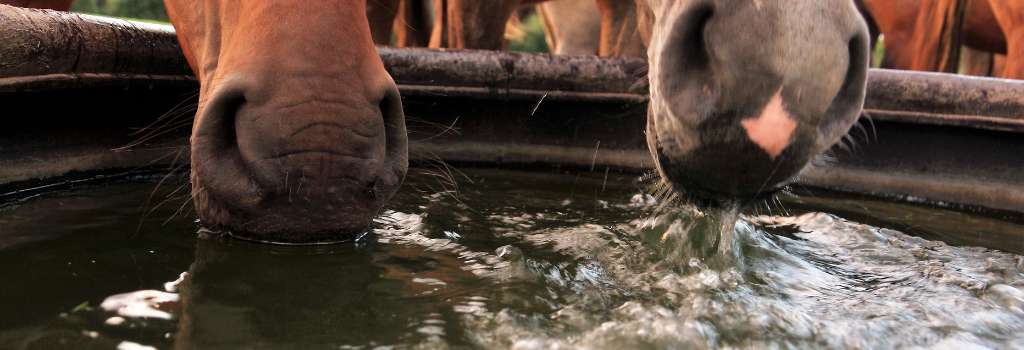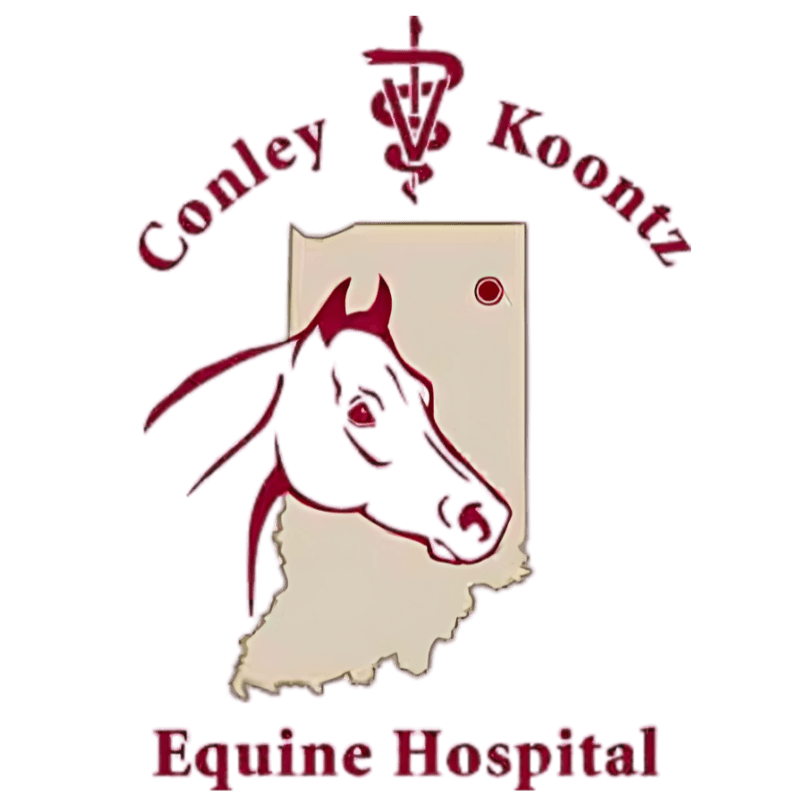When a horse becomes lethargic, loses interest in food and moves less, or has diarrhea and a fever, it's normal for any owner to become concerned. While there are numerous diseases and illnesses that can cause these symptoms individually, horse owners should be aware that when these symptoms appear concurrently, something more dangerous, like Potomac Horse Fever (PHF), could be the cause, and the horse should be seen by a veterinarian right away.
Potomac Horse Fever Explained: What It Is and What Causes It
Potomac Horse Fever is a bacterial disease caused by Neorickettsia risticii, a bacterium carried by several species of aquatic insects, including mayflies and caddisflies. Horses can fall ill with Potomac Horse Fever when they ingest these insects, which then exposes them to the bacteria. Most commonly, horses will ingest these insects carrying the bacteria when grazing near waterways or when drinking or eating from buckets or troughs that the insects have fallen into.
When a horse is exposed to the Neorickettsia risticii bacteria through ingestion, the bacteria infect the cells that line a horse's small and large intestines and trigger a whole-body inflammatory response, affecting the digestive system and immune system, as well as the hooves in some cases.
PHF is very common in endemic regions, including Northeastern Indiana. The disease is named for the Potomac River, where it was first identified, but has since spread to include many other areas that have standing water for carrier insects to breed. Our team at Conley & Koontz Equine Hospital has also identified cases on farms with no natural standing water, so I suspect large water tanks and long-standing puddles may also play an additional role in maintaining the disease in the environment and allowing PHF to spread.

Risk Factors for PHF: What Horses Are at Risk?
While other equine illnesses and diseases may commonly strike certain types of horses, such as young foals, senior horses, or chronically ill horses, Potomac Horse Fever is an equal opportunity disease – there do not appear to be any specific risk factors, and any horse can contract PHF.
Any time of year that allows the breeding of aquatic insects will put horses at risk. Typically, cases are seen from summer through early fall when the weather is warm enough for insect breeding; however, this season can start early or extend later if temperatures are warm or there is a lot of precipitation in a given year.
Is PHF Contagious?
The good news is that PHF is not contagious between horses and cannot spread from horse to horse. However, if one horse on the property is affected, all the horses on the property have the same risk of exposure. So if one of your horses falls ill with PHF, all other horses should be closely monitored for PHF symptoms to ensure that they are able to get prompt veterinary care.
Potomac Horse Fever Symptoms to Watch For
Potomac Horse Fever does not show up the same way in every horse, and it is not of the same severity in every horse. Typical clinical signs of Potomac Horse Fever that owners need to be aware of include:
- Fever
- Colic
- Diarrhea
- Laminitis
- Loss of Appetite
- Lethargy or depression
Lab work can show evidence of systemic infection, dehydration, and low protein. This year, we have seen horses present with simply not feeling well or not eating well, which quickly progress to the more classic signs, showing just how rapidly this illness can progress and affect horses. Some horses may not even present a number of clinical symptoms until later in their infection.
The incubation period for Potomac Horse Fever is generally considered to be approximately 10-14 days from initial exposure. However, it is realistically very difficult to determine when a horse was exposed, and the illness may progress differently in individual horses.
Do not wait until your horse is obviously sick to get them evaluated by a veterinarian. Early intervention is the key to survival in cases of Potomac Horse Fever!
Potomac Horse Fever and Laminitis Complications
Perhaps one of the most dangerous secondary complications of PHF is laminitis, a painful inflammation of the tissues inside a horse's hoof that can occur as a result of the immune response triggered by the Neorickettsia risticii bacteria.
Laminitis can make walking and even standing incredibly painful for a horse, and if not resolved promptly, can contribute to lasting lameness or even severe infections that may be fatal.

How Your Veterinarian Will Diagnose Potomac Horse Fever
Because the initial symptoms of Potomac Horse Fever may be similar to other illnesses, such as salmonellosis or colitis, prompt and accurate diagnoses are incredibly important to improving a horse's chance of recovery.
PHF can be diagnosed by whole blood or fecal PCR, along with a physical examination. Serum titers can also be used, but often take longer to return and are not specific for active infection.
Treatment of Potomac Horse Fever Explained
Treatment for PHF is intense and often requires hospitalization in an ICU. Antibiotics are used to combat the actual bacteria, but more important is the management of the consequences of the disease. Following a PHF infection, horses often need aggressive IV fluid therapy, plasma transfusions, anti-diarrhea management, and stabilization of laminitis.
Early intervention in vaccinated horses provides the best prognosis and can limit the severity of side effects and complications. The overall prognosis for a horse with Potomac Horse Fever typically depends on the severity of infection. Mildly affected horses have a very good chance of complete recovery, while horses that are severely dehydrated, hypoproteinemic, or laminitic at the time of initial intervention have a very poor prognosis. Thankfully, horses that recover will recover completely.
Preventing Potomac Horse Fever and Giving Horses a Better Chance of Recovering
Concerned horse owners have asked us for recommendations on how to best prevent and manage Potomac Horse Fever, and to that I say: Vaccinate, vaccinate, vaccinate. Don't let a friend or neighbor's story about how a vaccine didn't work steer you away from it. The Potomac Horse Fever vaccine is safe, and it's a great insurance policy! Though this vaccine has long been known not to be fantastic at preventing disease, it has been documented to be very effective at preventing severe disease. Mildly affected horses have a much greater chance of survival, and will not experience as severe and painful symptoms as severely affected horses.
The Potomac Horse Fever vaccine is widely available and has been very effective in limiting the severity of the disease. It is currently recommended that horses be vaccinated every 3 months during the peak season to offer the best protection.
For further prevention, it is highly recommended to minimize your herd's exposure to standing water, change and clean water tubs daily, and vaccinate all horses regularly. It is also vitally important that any health concerns with a horse be evaluated by a veterinarian ASAP, no matter how minor it may seem. Intervention on a PHF horse needs to start when it seems like it's "no big deal," in order to be as effective as possible.
If you have questions and you'd like to reach out to us, you can call us directly at (877) 499-9909, or you can email us at [email protected]. Don't forget to follow us on social media Facebook, Instagram.
